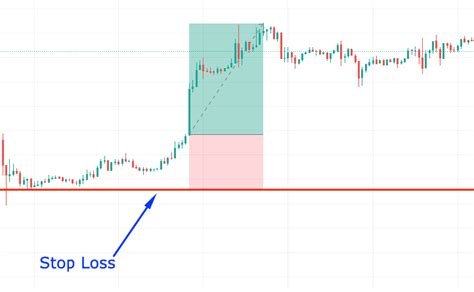The Power of Cryptocurrency: A Guide to Investing in a Bull Market

As the world of finance continues to evolve, one asset class has gained significant attention in recent years: cryptocurrencies. With their potential for rapid growth and increased adoption, many investors are flocking to this new frontier. But with big investments comes big risks, and understanding the basics is essential before diving into the world of cryptocurrencies.
What is Cryptocurrency?
Cryptocurrencies are digital or virtual currencies that use cryptography for secure financial transactions. The most well-known cryptocurrency is Bitcoin (BTC), but others such as Ethereum (ETH), Litecoin (LTC), and Monero (XMR) have also gained significant traction. These cryptocurrencies operate on a decentralized network, allowing users to send, receive, and transfer value without the need for intermediaries.
Stop Loss: An Essential Tool for Investors
A stop loss is a crucial investment strategy that helps traders manage risk and protect their capital. It’s essentially a predetermined price level at which you sell an asset when it reaches a certain level of decline, thereby limiting potential losses. When applied to cryptocurrency investments, a stop loss can be particularly effective.
Imagine your Bitcoin investment has reached $10,000, but the market is experiencing a downturn and the price starts to fall. If you have a stop loss in place at $9,999, you will automatically sell the asset when it falls below that level, buying it back at the lower price to lock in a profit.
Investment Returns: What Can You Expect?
Returns on investment (ROI) from cryptocurrency investments can be volatile and unpredictable. However, historical data suggests that most investors have experienced significant gains over time. According to data from CoinMarketCap, Bitcoin’s average annual return has been around 50% since its introduction in 2009.
Here’s a rough breakdown of the ROI potential for different cryptocurrencies:
- Bitcoin: 1-2% per year
- Ethereum: 5-10% per year
- Litecoin: 4-8% per year
It’s important to note that these are general estimates and may not reflect your individual experience. Furthermore, cryptocurrency markets are highly speculative, meaning prices can fluctuate quickly and unpredictably.
Bull Market: Understanding the Conditions for Successful Investing
A bull market is a period of sustained upward momentum in the price of an asset, typically accompanied by increased investor confidence and economic growth. In the context of cryptocurrency, a bull market would mean that investors are optimistic about the potential returns of these assets, leading to higher purchase prices.
Some key conditions for a successful bull market include:
- Increased mainstream adoption and recognition
- Improved infrastructure and scalability
- Improved regulatory clarity
- Growing institutional investment
Why invest in crypto during a bull market?
While a bull market may seem appealing, it is essential to consider the following:
- Increased volatility: Price swings can be extreme, making it challenging to predict future returns.
- Risk of loss: Crypto markets are inherently unpredictable and subject to significant price fluctuations.
- Regulatory uncertainty
: Governments and regulators are still grappling with issues such as tax compliance, anti-money laundering (AML), and know-your-customer (KYC) requirements.
Despite these risks, investing in crypto during a bull market can be profitable. To maximize your chances of success:
- Diversify your portfolio: Spread your investments across different assets to minimize risk.
- Set clear investment goals: Define your investment strategy and risk tolerance before entering the cryptocurrency market.
